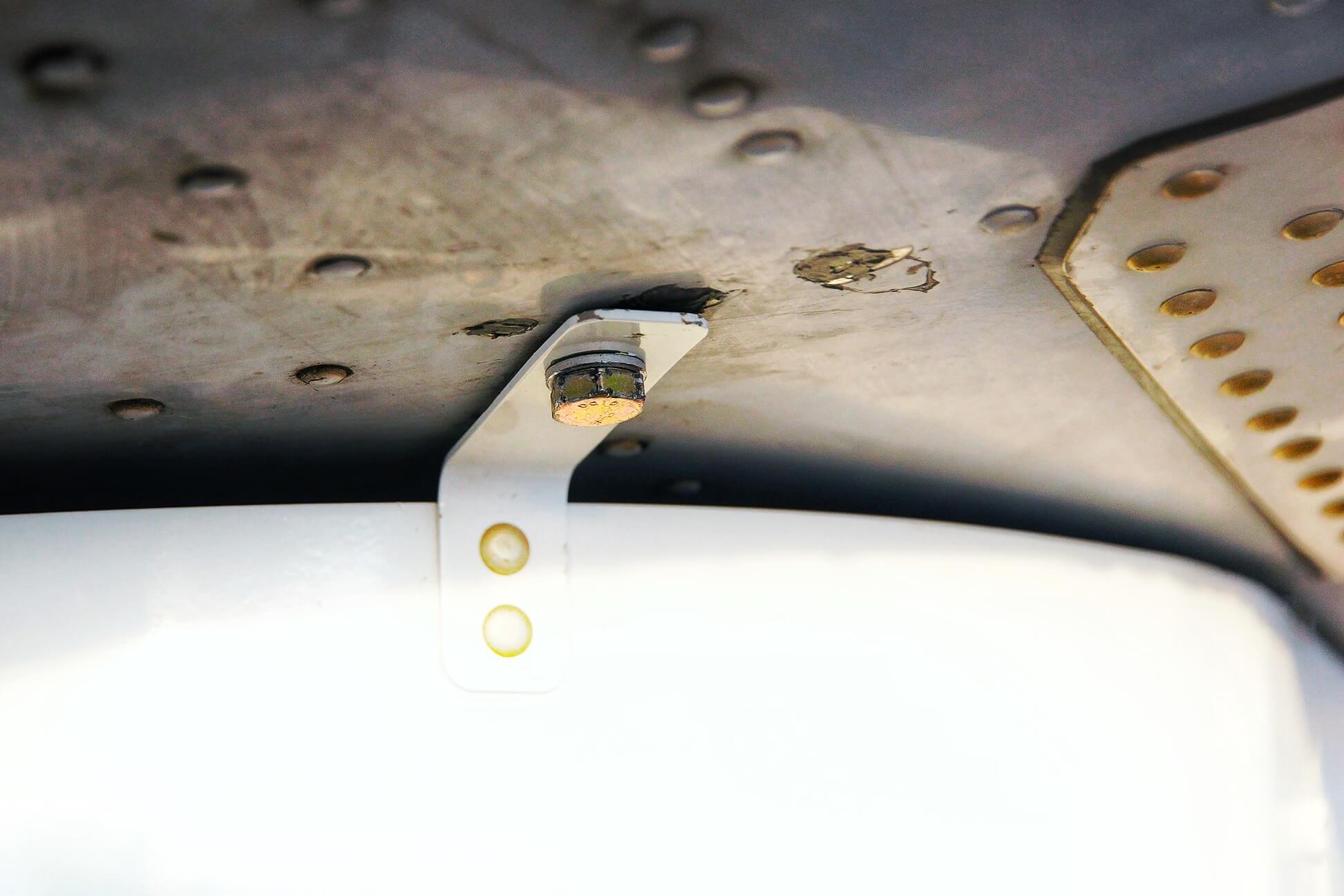Installing external systems on top an aircraft
Many payloads require installation in the fuselage or wing of an aircraft. This is different than systems installed inside the body of the plane and do not protrude from its original faring. The need in such an installation can be caused by many reasons, some of which are related to the type and structure of the aircraft, while others are caused by the type and structure of the payload. The external structure of an aircraft is built out of light and aerodynamic materials that are not necessarily able to carry extra weight. In such cases, it is necessary to perform a structural strengthening of the fuselage or wings of the aircraft, so they can carry external loads on the strengthened area which is designed for technological, research or agricultural use.
Using hard points as an infrastructure for installing external systems
As opposed to the plane’s outer structure, its skeleton is built of stronger materials, and in an engineering design with beams and separators that gives structural strength to the aircraft. A “hard point” is a physical spot you can engineeringly add to the aircraft’s skeleton. Each hard point has its own specific weight and space limitation.

Distribution of loads among “stations” in installing hard points on an aircraft
Each segment on an aircraft is called a “station” in engineering jargon. Sometimes, when it is required to install a large and heavy payload, a number of hard points are installed over several “stations” in the plane. Through this method it is possible to distribute the load over the structure of the aircraft in a way that would not harm flight safety and the payload installed.
Piper Cheyenne 3 with hard points on its underbelly
LIFEAIR owns a Cheyenne 3 air-compressed airplane with a flight level of 30,000 feet. The plane is designated for experimental flights and installation of remote sensor systems and many payloads. The ability to install and carry heavy-weight and large systems is built by using six hard points qualified to carry over 200kgs. The combination of the plane’s capabilities and operating in high altitude with the ability to carry external weight on top of the hard points on the underbelly of the plane allow the company’s clients to perform installations and complex flights which would not have been possible with any other flight configurations.
Pylon carrier for installation on hard points
A pylon is an airborne adapter for carrying payloads on hard points installed in the aircraft’s fuselage. The pylon can be used to haul many payloads which require clean viewing angles, versatile flight speeds and low and high flight levels. The use of a pylon enables an easier basis for certifying various systems on the plane. This is because the pylon is recognized and certified as a strong engineering platform for carrying payloads on the plane.
Characterization of the installation of an external system on a pylon
To install any external system on the pylon of the plane, it is necessary to characterize the desired installation configuration of the system and design an adapter between the pylon and the system which will keep the engineering strength of the system’s installation configuration. LIFEAIR specializes in characterizing, designing, manufacturing and certifying of various systems and designated adapters to carry external loads on a pylon.